30 minutes flat, and you get a thick, creamy and decadent kheer, popularly known as a payasam in South India, made with an uncommon ingredient. Sago or tapioca pearls is locally called Sabudana and is the main ingredient in this South Indian style Javvarisi Payasam. This creamy sweet pudding made with sago, milk, ghee and sugar is also known as Sago Payasam or Saggubiyyam Payasam in the Telugu language. The recipe is super easy and a great way of using sabudana pearls in a dessert form. It is also gluten-free.
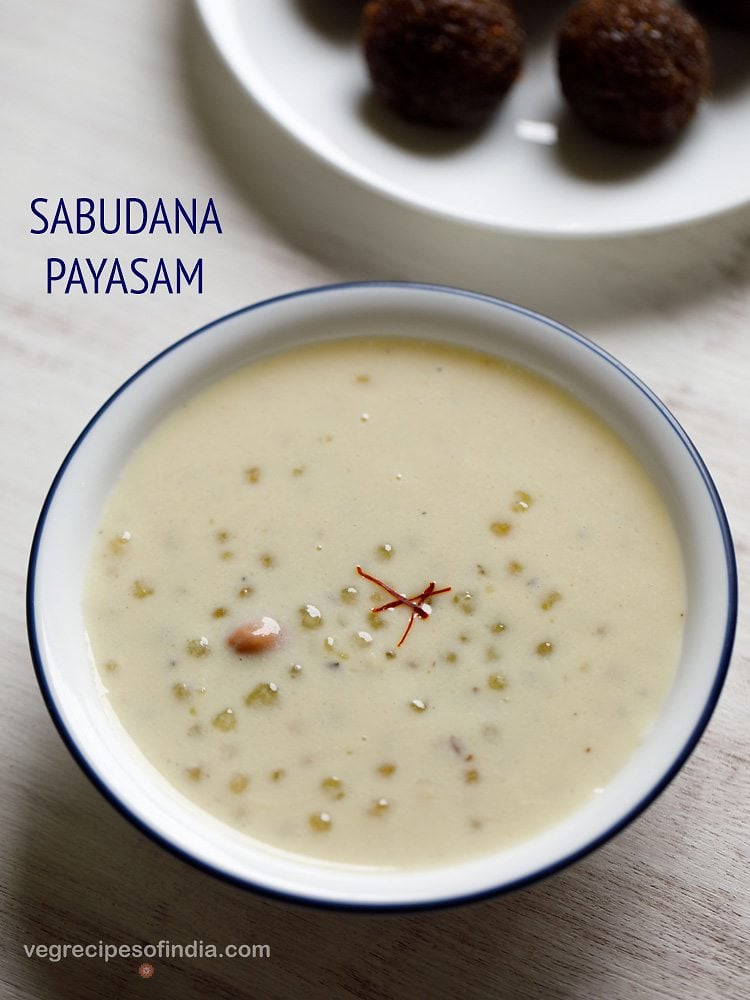
What is Javvarisi Payasam
Basically, in Tamil language, ‘sago pearls’ are known as ‘javvarisi,’ and a ‘payasam’ is your ‘kheer’ made in a South Indian style. Since, this sweet dish is a sago kheer from South India, the name is Javvarisi Payasam.
Sago are round shaped pearls made from tapioca root or yuca root. They are also called as ‘tapioca pearls’ in English and ‘sabudana’ in Hindi. In addition to these, other South Indian regional names of this ingredient are ‘sabakki’ in Kannada, ‘saggubiyyam’ in Telugu and ‘chowari’ in Malayalam.
I make this Javvarisi Payasam similar to the way I prepare the Aval Payasam (made with poha or aval), but with a few differences. In this particular Sago Payasam recipe, you don’t need to soak the sago. However, note that cooking the sago without soaking takes more time than if it is soaked earlier.
Javvarisi Payasam can be prepared in 2 ways – one, by soaking the sago and second, by roasting the sago and then further cooking it. I usually choose the second method which is also this specific post here mentions. This method of mine is also helpful, when you really want to make the saggubiyyam payasam at any time or have forgotten to soak the sago.
When I offer Javvarisi Payasam as naivedyam to the deities, I add edible camphor. But it can be easily skipped. You can also serve this yummy sweet treat as a dessert after your meals at home.
Saggubiyyam Payasam With Jaggery
Although I have added raw sugar in this recipe of Javvarisi Payasam, you can also make this delightful payasam with jaggery. This way, you can cut down on a few calories in this sweet dish.
To add jaggery, follow my recipe of Javvarisi Payasam entirely, without adding sugar. Remove the pan from stovetop and keep aside for 3 to 4 minutes. Then, add ½ cup grated or chopped jaggery.
If jaggery is added to boiling hot milk, it will curdle the milk. So, it helps to reduce the heat a wee bit, then add the jaggery in this payasam.
If your jaggery has impurities, then first dissolve it in some warm water. Then, filter it and add to the Javvarisi Payasam. You can even add palm sugar, coconut sugar or palm jaggery following these methods.
How to make Javvarisi Payasam
Fry Cashews and Raisins
1. In a heavy kadai or pan, take 1 tablespoon ghee and heat it on low to medium flame.
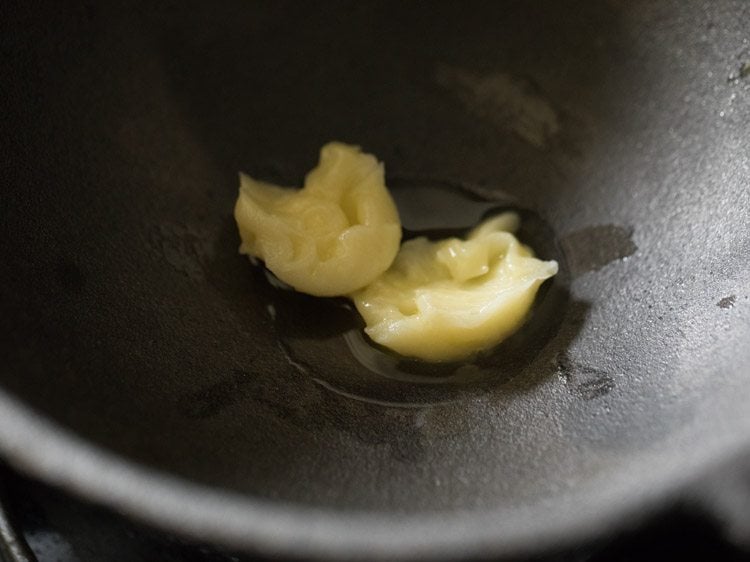
2. When the ghee melts, add 10 to 12 cashews.
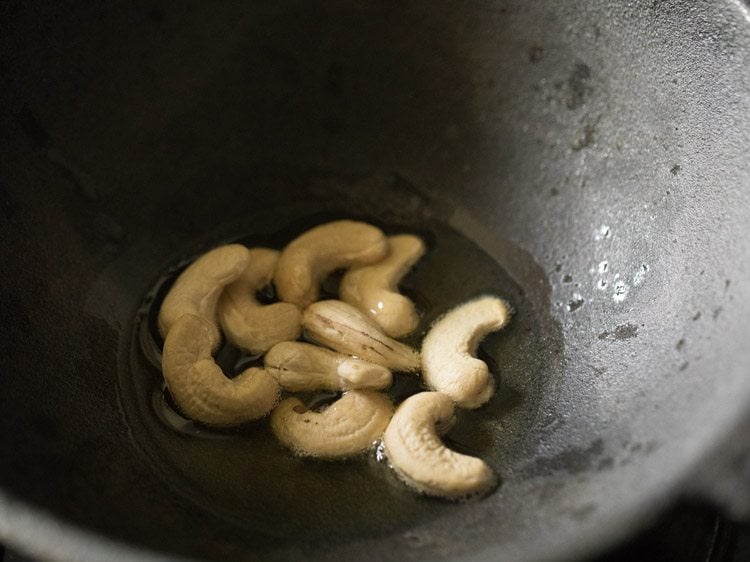
3. Begin to fry the cashews on low heat.
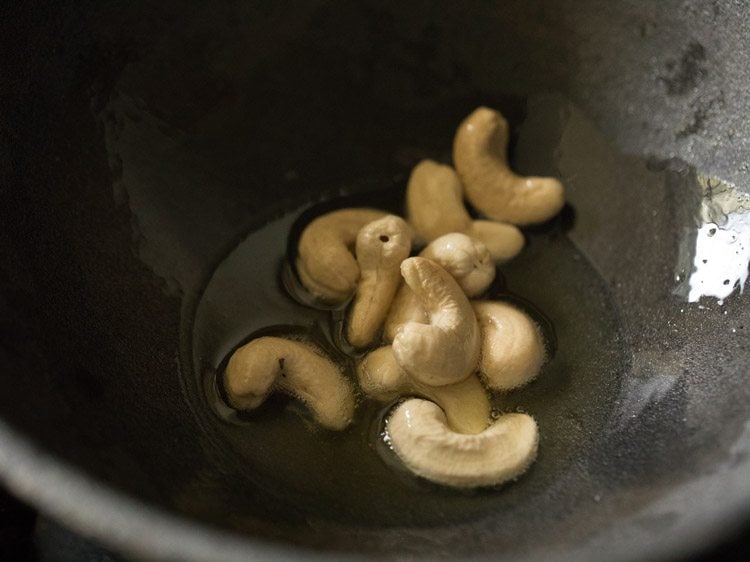
4. Fry cashews till golden. Remove with a slotted spoon and keep aside.
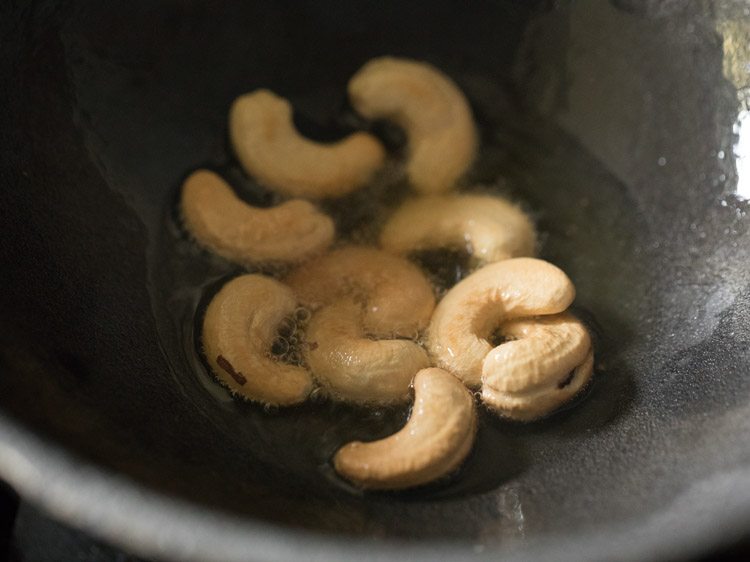
5. Then, add 1 tablespoons raisins.
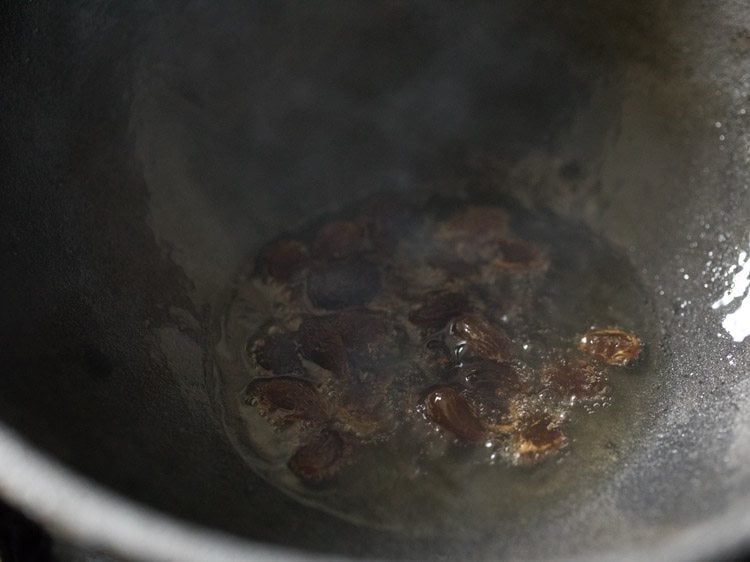
6. Stirring often, fry the raisins, till they swell and become plump.
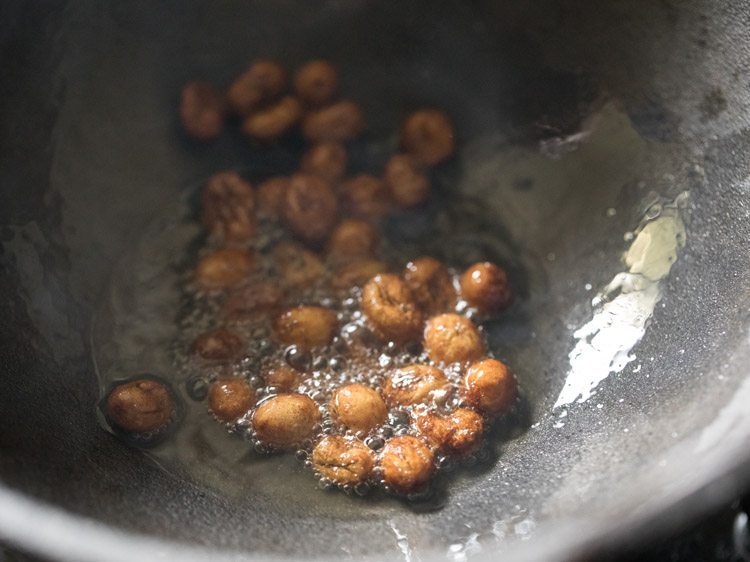
7. Remove fried raisins with a slotted spoon and keep with the fried cashews.
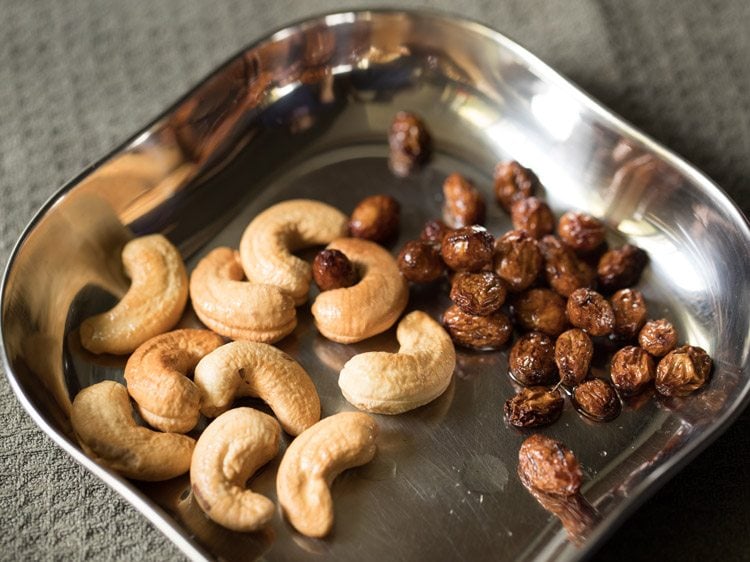
Roast Javvarisi (Sago)
8. Add ½ cup sago or javvarisi.
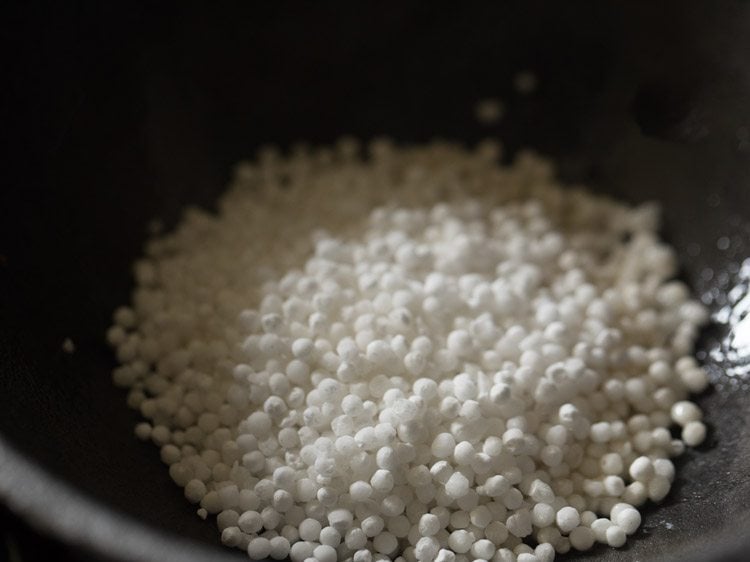
9. Mix the javvarisi well with the ghee and begin to roast on low heat. Stir often.
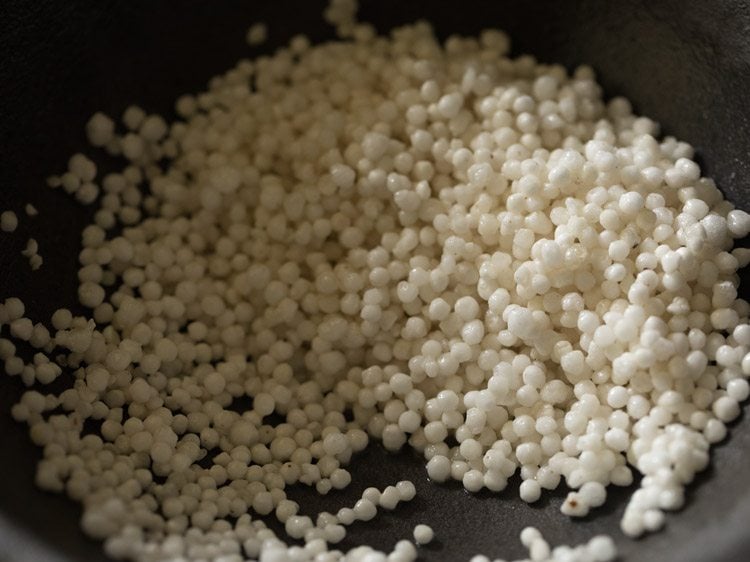
10. Roast on low heat for 2 to 3 minutes.
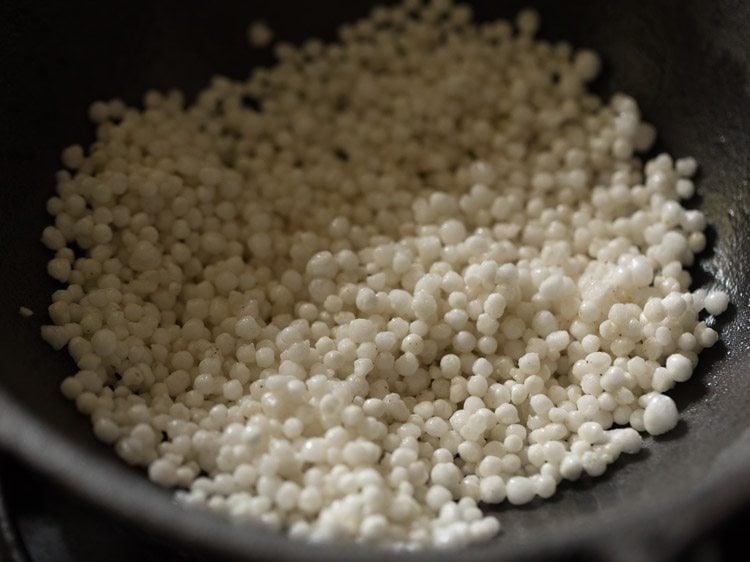
Cook Javvarisi (Sago)
11. Then, add 3 cups water.
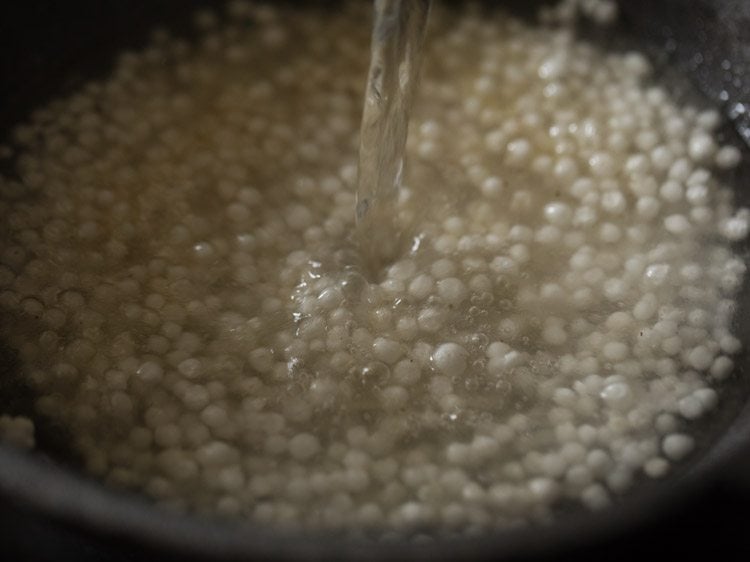
12. Mix well and simmer on low to medium heat.
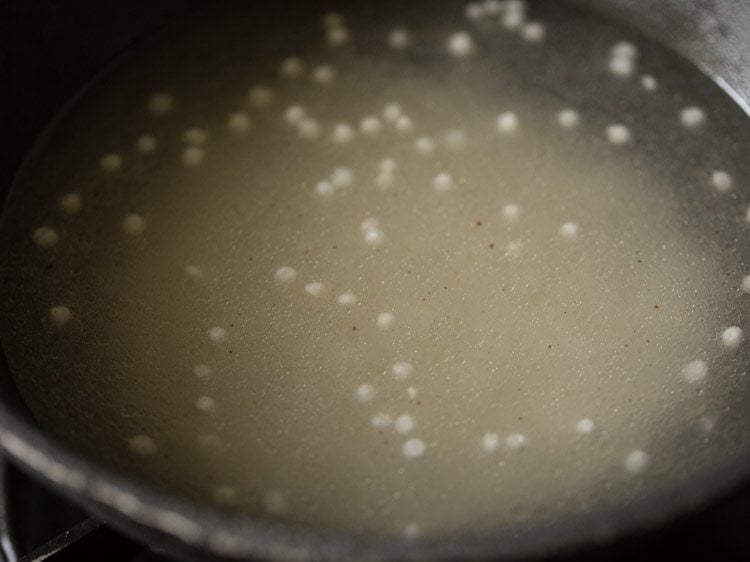
13. The sago pearls will begin to get cooked and start floating on the top.
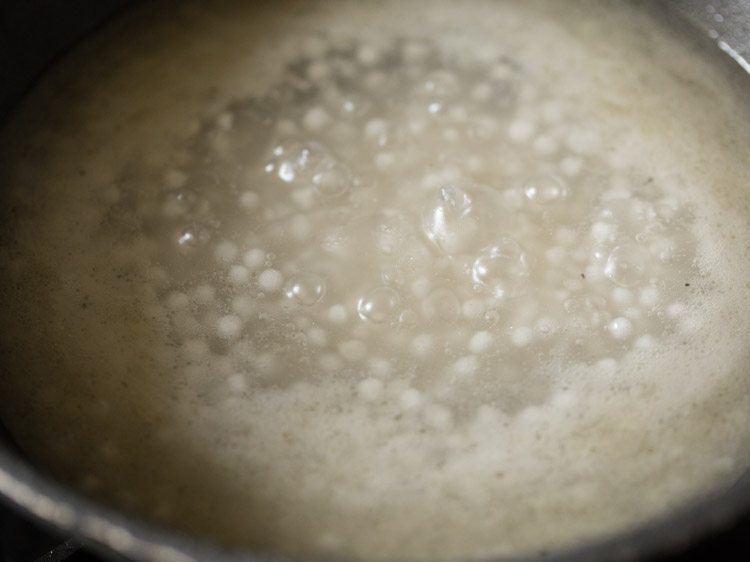
14. While cooking sago, there will be some scum on top. If you want, you can remove the scum with a slotted spoon.
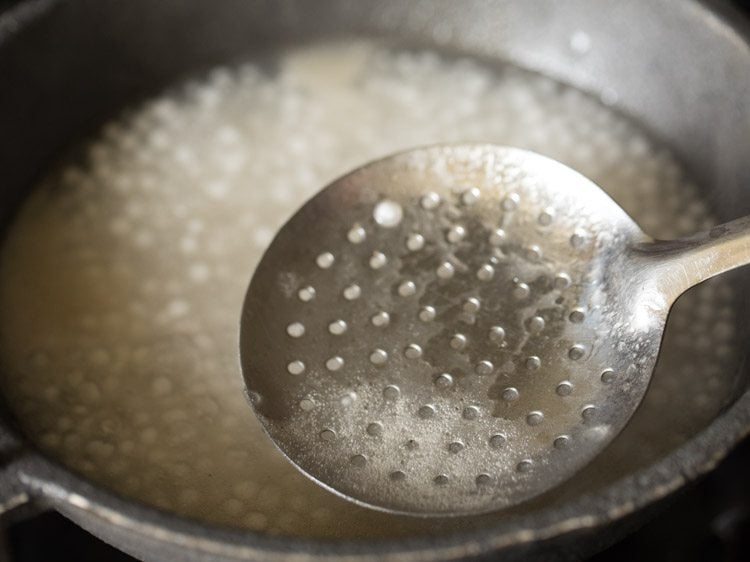
15. Stir at intervals, so that the sago does not stick at the bottom of the pan.
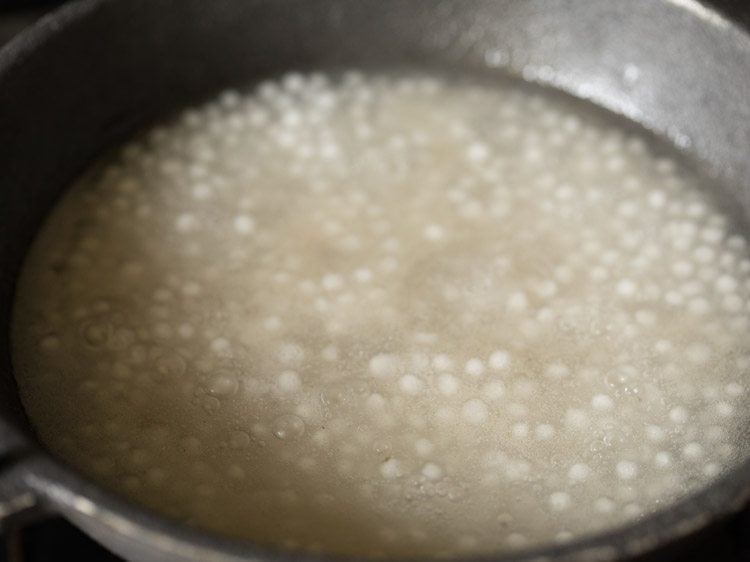
16. Simmer until you see the sago pearls becoming translucent and floating on top.
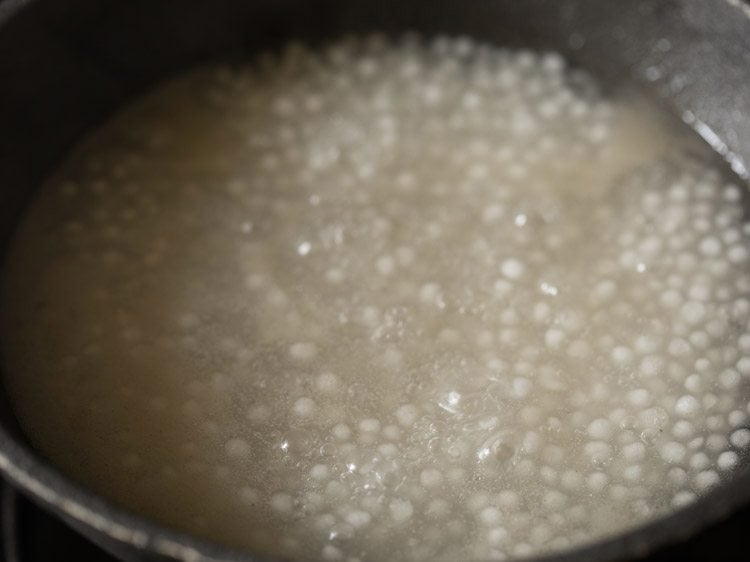
Make Saggubiyam Payasam
17. Then, add 2 cups whole milk.
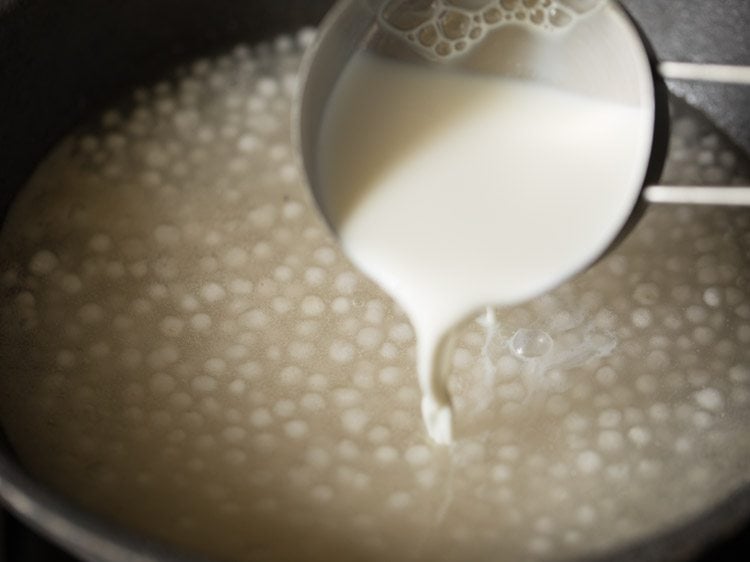
18. Mix very well.
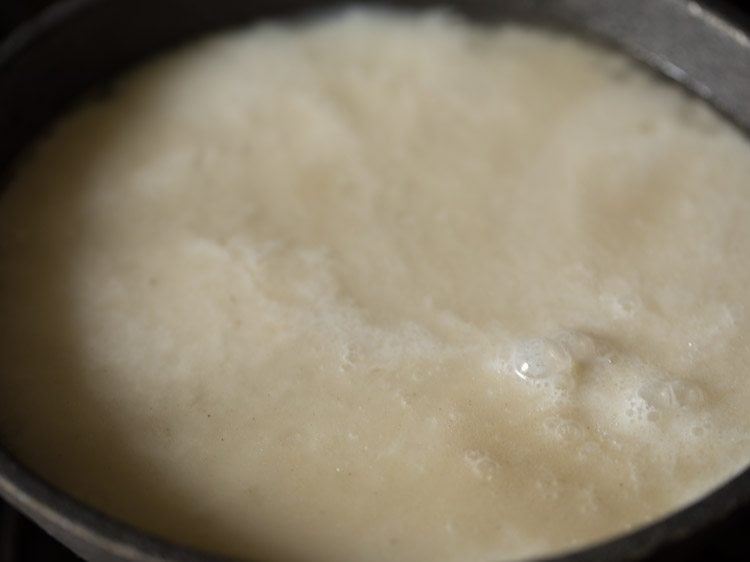
19. Add ½ cup sugar.
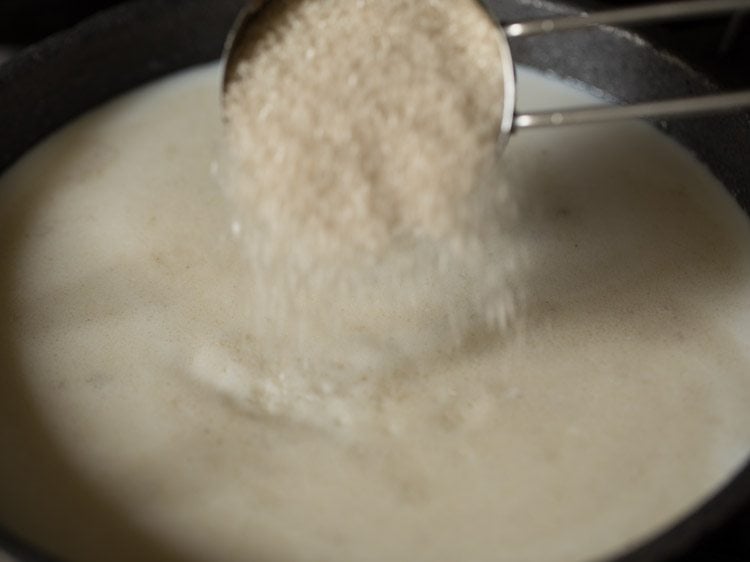
20. Stir well so that all the sugar dissolves.
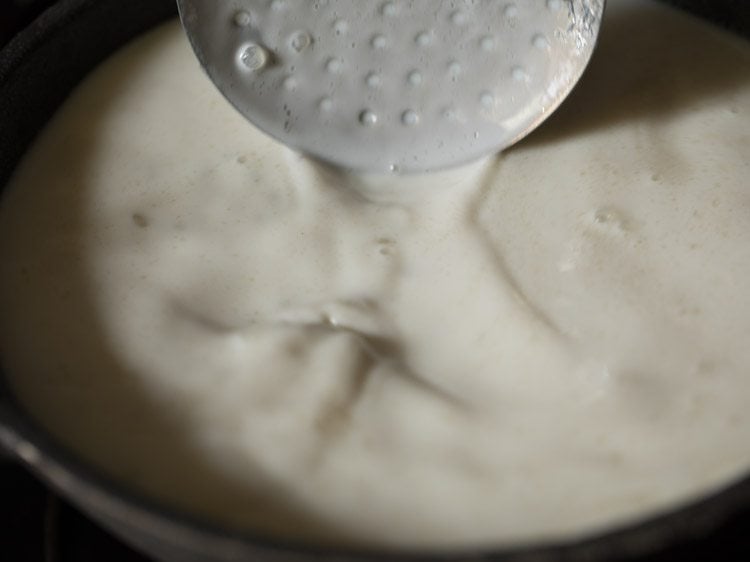
21. Add ½ teaspoon green cardamom powder.
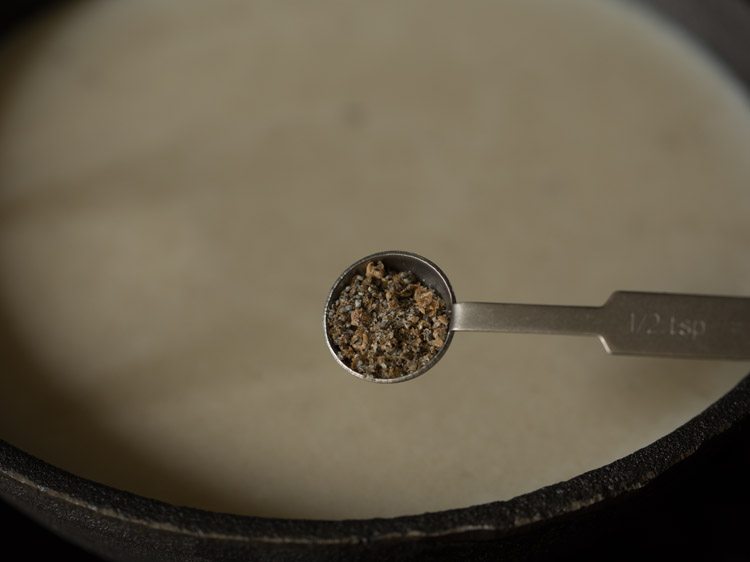
22. Next, add 1 pinch saffron. You can skip saffron strands also.
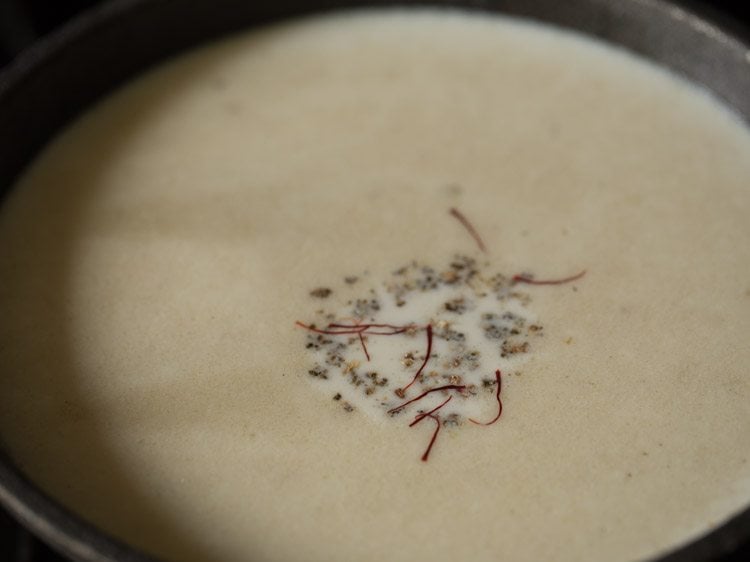
23. Simmer the Javvarisi Payasam on low heat until sago has cooked well and softened.
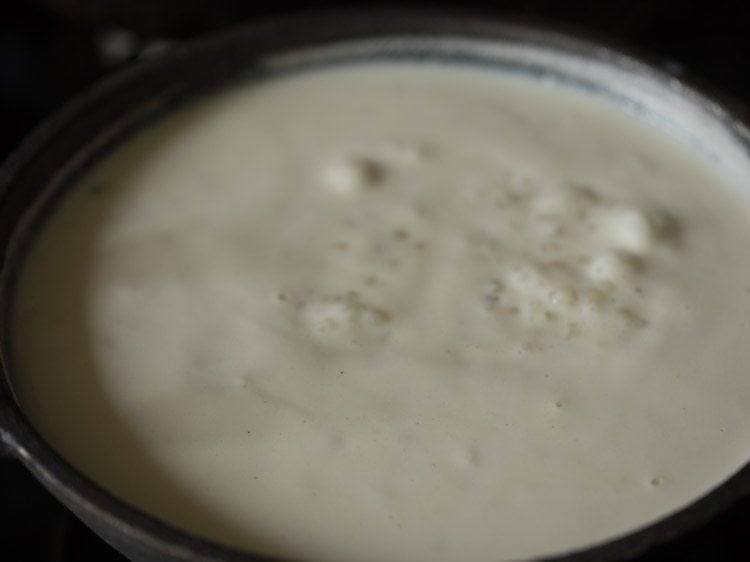
24. Stir often, so that the sago does not get stuck at the bottom of the kadai or pan.
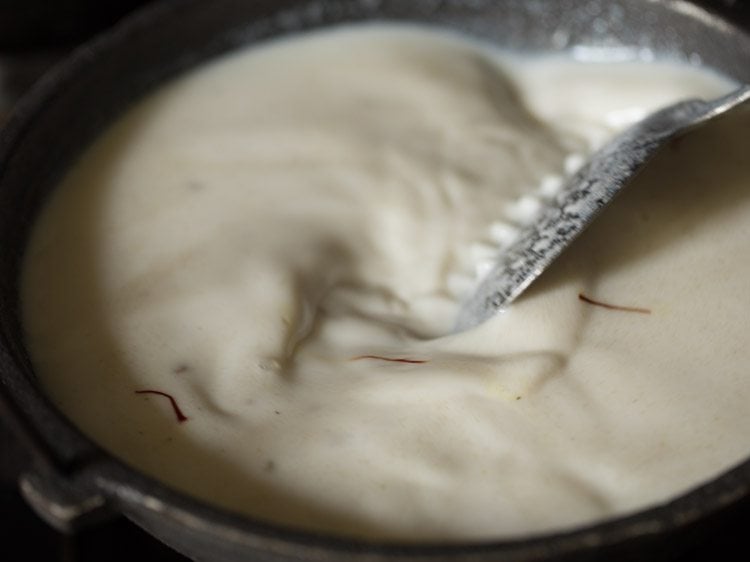
25. Simmer until the sago has cooked well and softened. This takes a total of about 20 to 25 minutes on low heat, right from the start when the sago pearls are cooked in water.
Remember to stir sago, so that they do not stick and become lumpy.
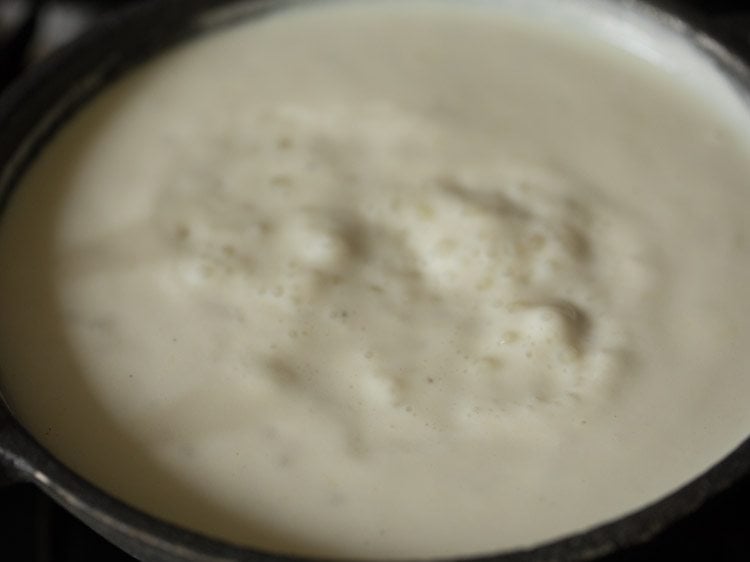
26. Check the pearls and press them between your fingers. They should be completely softened and look translucent. The milk will also thicken by the time the sago pearls are cooked.
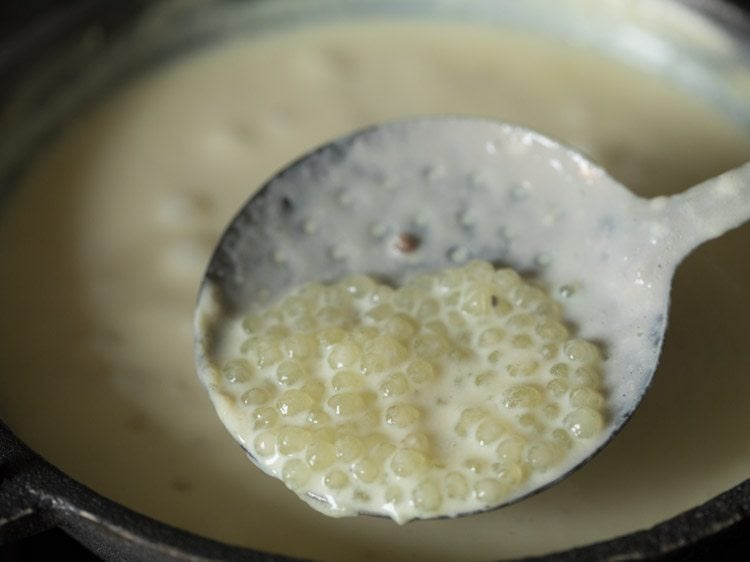
27. Some milk solids will be stuck at the sides. Scrape with a spoon or spatula and add them back to the payasam.
Sago Payasam thickens after cooling. So, if you want a thin payasam, add some more hot milk and sugar as required at this step.
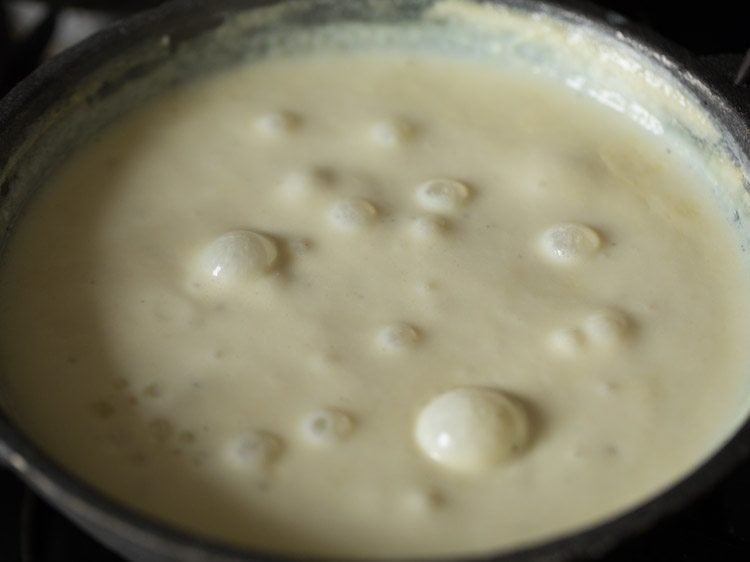
28. Lastly, add the fried cashews and raisins along with 1 pinch edible camphor. Edible camphor is an optional ingredient. Mix well.
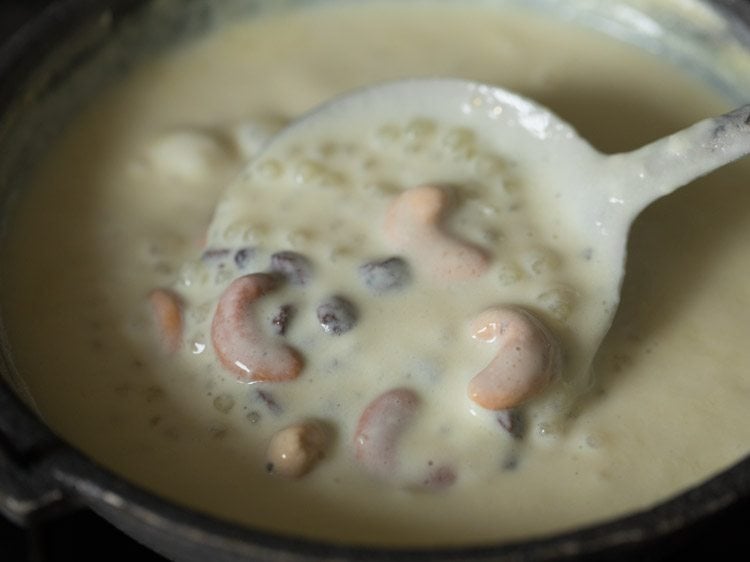
29. Serve Javvarisi Payasam or Saggubiyyam Payasam hot, warm or chilled as a dessert after meals.
If offering to your deity, then first offer the payasam to the deity and then serve it to your family as prashad.
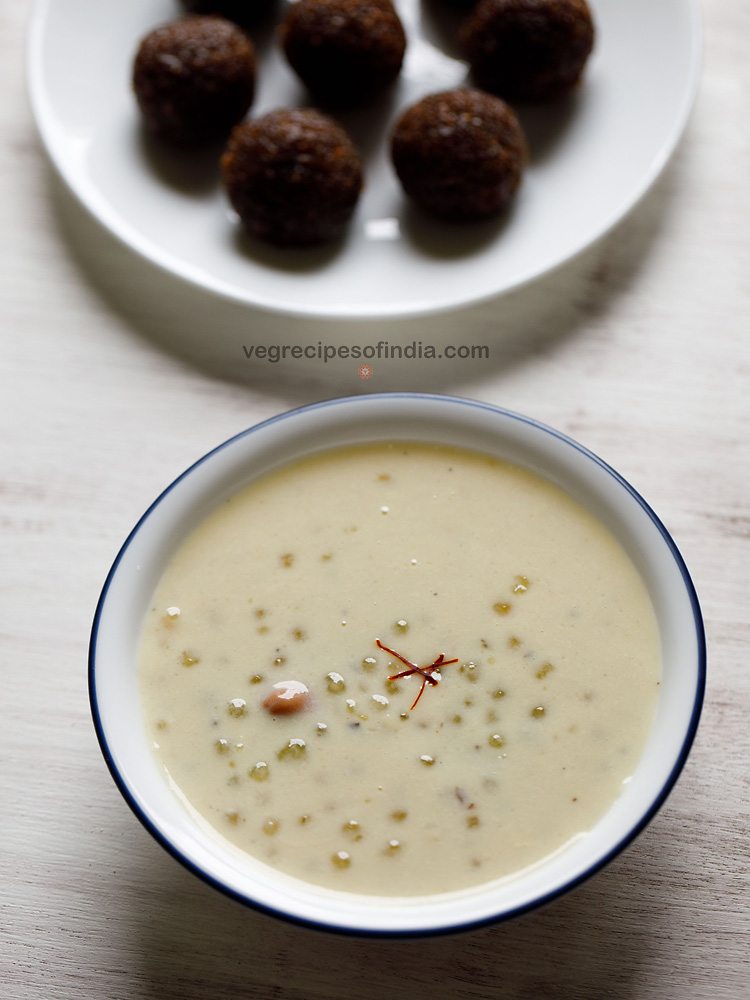
Expert Tips
- Type of sago: Use the sago that we add in Sabudana Khichdi and Sabudana Vada. Do not add the large nylon sago variety.
- Milk: Use whole milk of full fat milk for better consistency, taste, richer and creamier Saggubiyyam Payasam.
- Sugar substitutes: You can easily replace sugar with jaggery, palm jaggery and coconut sugar. Do read my method on how to replace it above the step-by-step guide.
- Nuts: You can add almonds, pistachios, walnuts or any nuts that you like.
- Flavorings: You can add or skip adding saffron strands and edible camphor in this payasam.
- Consistency: Javvarisi Payasam thickens as it cools. If you want a lighter fluid consistency, then add some milk before serving or cook it to the consistency you prefer, so that on cooling it doesn’t thicken too much. For a thin payasam, add more milk and increase the quantity of sugar, accordingly.
- Pressure cooking: For faster cooking, you can cook the sago in 2 to 2.5 cups water in a pressure cooker for 1 to 2 whistles. Then, add milk and stirring at intervals, cook till the payasam thickens.
- Storage: Leftovers stay well in the refrigerator for 2 to 3 days. Before serving, gently warm or heat the payasam.
- Vegan version: Make this payasam with coconut milk or almond milk. Cook sago in water until softened completely and thoroughly. Next add in the sugar, green cardamom powder, saffron strands and mix thoroughly. Then, add coconut milk or almond milk. Gently heat through until warm or lightly hot. Do not boil. Finish with the fried cashews and raisins.
- Scaling: Easily make a large batch of this saggubiyyam payasam for festive occasions.
More Payasam Recipes To Try!
Sweets Recipes
South Indian Food
Sweets Recipes
Sweets Recipes
Please be sure to rate the recipe in the recipe card or leave a comment below if you have made it. For more vegetarian inspirations, Sign Up for my emails or follow me on Instagram, Youtube, Facebook, Pinterest or Twitter.
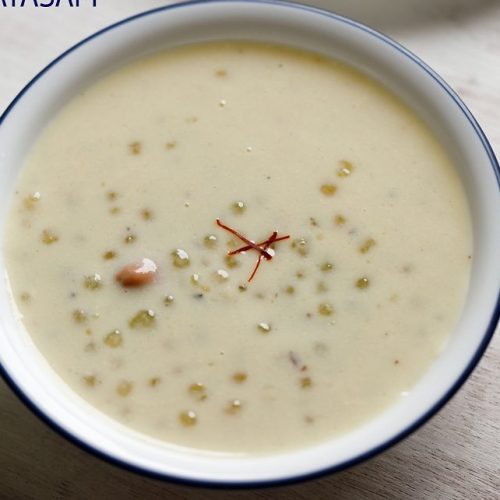
Javvarisi Payasam | Saggubiyyam Payasam | Sago Payasam
Ingredients
- 1 tablespoon Ghee (clarified butter)
- 10 to 12 cashews
- 1 tablespoons raisins
- ½ cup javvarisi (sago, saggubiyyam or tapioca pearls)
- 3 cups water
- 2 cups whole milk
- ½ cup sugar or add as required
- ½ teaspoon green cardamom powder
- 1 pinch saffron – optional
- 1 pinch edible camphor – optional
Instructions
Frying cashews and raisins
- In a heavy kadai or pan, take 1 tablespoon ghee and heat it on a low to medium flame.
- When the ghee melts, add 10 to 12 cashews (kaju).
- Begin to fry the cashews on a low heat.
- Fry cashews till they become golden. Remove with a slotted spoon and keep them aside.
- Then add 1 tablespoons raisins (kishmish).
- Stirring often fry the raisins, till they swell and become plump.
- Remove fried raisins with a slotted spoon and keep them aside along with the fried cashews.
Roasting javvarisi (saggubiyyam)
- Now add ½ cup sago.
- Mix the sago well with the ghee and begin to roast on a low flame stirring often.
- Roast for 2 to 3 minutes on low flame.
Cooking javvarisi in water
- Then add 3 cups water.
- Mix well and simmer on low to medium heat.
- The sago pearls will begin to get cooked and start floating on the top.
- When cooking the javvarisi pearls, there will be some scum on top. If you want you can remove the scum with a slotted spoon.
- Do stir at intervals when the sago pearls are cooking, so that they do not stick at the bottom of the pan.
- Simmer until you see the sago pearls becoming translucent and floating on top.
Making javvarisi payasam
- Then add 2 cups full fat milk. mix well.
- Add ½ cup sugar and stir well so that all the sugar granules dissolves.
- Add ½ teaspoon green cardamom powder and 1 pinch saffron. You can skip saffron strands also.
- Simmer the payasam on a low heat till the sago pearls have cooked well and softened.
- Do stir often so that the javvarisi does not get stuck at the bottom.
- Simmer until all the sago has cooked well. Cooking sago takes about a total of 20 to 25 minutes on a low heat right from the start when they are cooked in water. Do remember to stir so that the sago does not stick to the bottom of pan and become lumpy.
- Check the pearls and press them between your fingers. They should be completely softened and look translucent. The milk will also thicken by the time the sago pearls are cooked.
- Some milk solids will be stuck at the sides. Scrape them with a spoon or spatula and add back to the payasam. Keep in mind that the payasam thickens after cooling. So if you want a thin payasam, you can add some more hot milk and sugar as needed at this step.
- Lastly add the fried cashews and raisins along with 1 pinch edible camphor (optional). Mix well.
- Serve Javvarisi Payasam hot or warm or chilled as a dessert after meals. If offering to your deity, then first offer the sago payasam to the deity and later serve it to your family as prashad.
Notes
- Milk: For a richer and creamy payasam use whole milk or full fat milk.
- Nuts: Add nuts that you like – almonds, pistachios, walnuts or any nuts.
- Type of sago: Use the regular variety of sago that we add in Sabudana Vada. Do not add the large nylon sago.
- Sugar replacements: You can easily replace sugar with jaggery, palm jaggery and coconut sugar. Do read my method on how to replace it above the step-by-step guide in the main post above.
- Consistency: As the payasam cools it thickens. If you want a lighter fluid consistency, then add some milk before serving or cook it to the correct consistency you want so that on cooling it does thicken too much.
- Pressure cooking: For faster cooking, cook the sago in a pressure cooker for 1 to 2 whistles with the water. Then add milk and stirring at intervals cook until the payasam thickens.
- Scaling: Make easily a large batch of this saggubiyyam payasam for festive occasions.
- Storage: Leftovers stay well in the refrigerator for 2 to 3 days. Gently warm or heat before serving. You can even serve chilled.
- Vegan option: Use coconut milk or almond milk. Cook the sago pearls in water until they are softened completely. Add in the sugar, cardamom powder, saffron strands and mix thoroughly. Add coconut milk or almond milk. Gently heat through until warm or lightly hot – do not boil. Finish with the fried cashews and raisins.
Nutrition Info (Approximate Values)
This Javvarisi Payasam recipe from the archives first published in August 2017 has been updated and republished on May 2023.
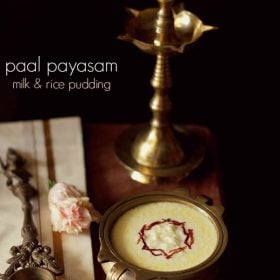
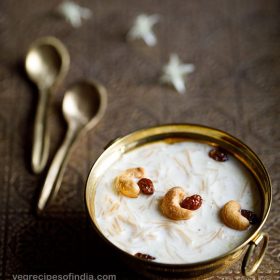
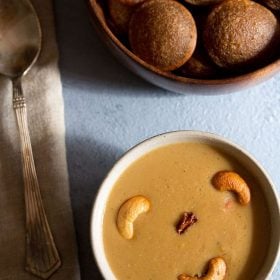
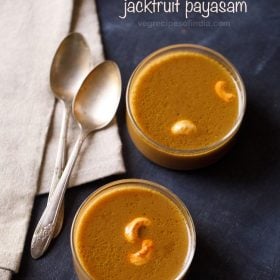



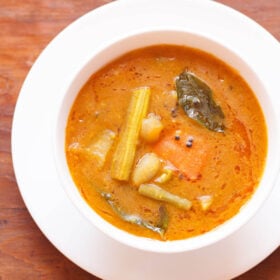








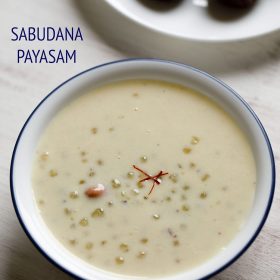
Happy Ganesh Chaturthi!
Can jaggery be added instead of sugar?
Thanks
Happy Ganesh Chaturthi. Yes, you can use jaggery. But add jaggery once the payasam is done. Wait for 3 to 4 minutes and then add jaggery so that the milk does not curdle.
Can we pressure cook the sabudana for a whistle
Yes you can.
Please send me recipes to my email account
nice dassana…. wats the other dish in plate….:-)
thanks shubha. those are ladoos made with fresh coconut, jaggery and cardamom powder. its a bengali recipe of ladoos known as narkel naru. this version is also called as gurer narkel naru.